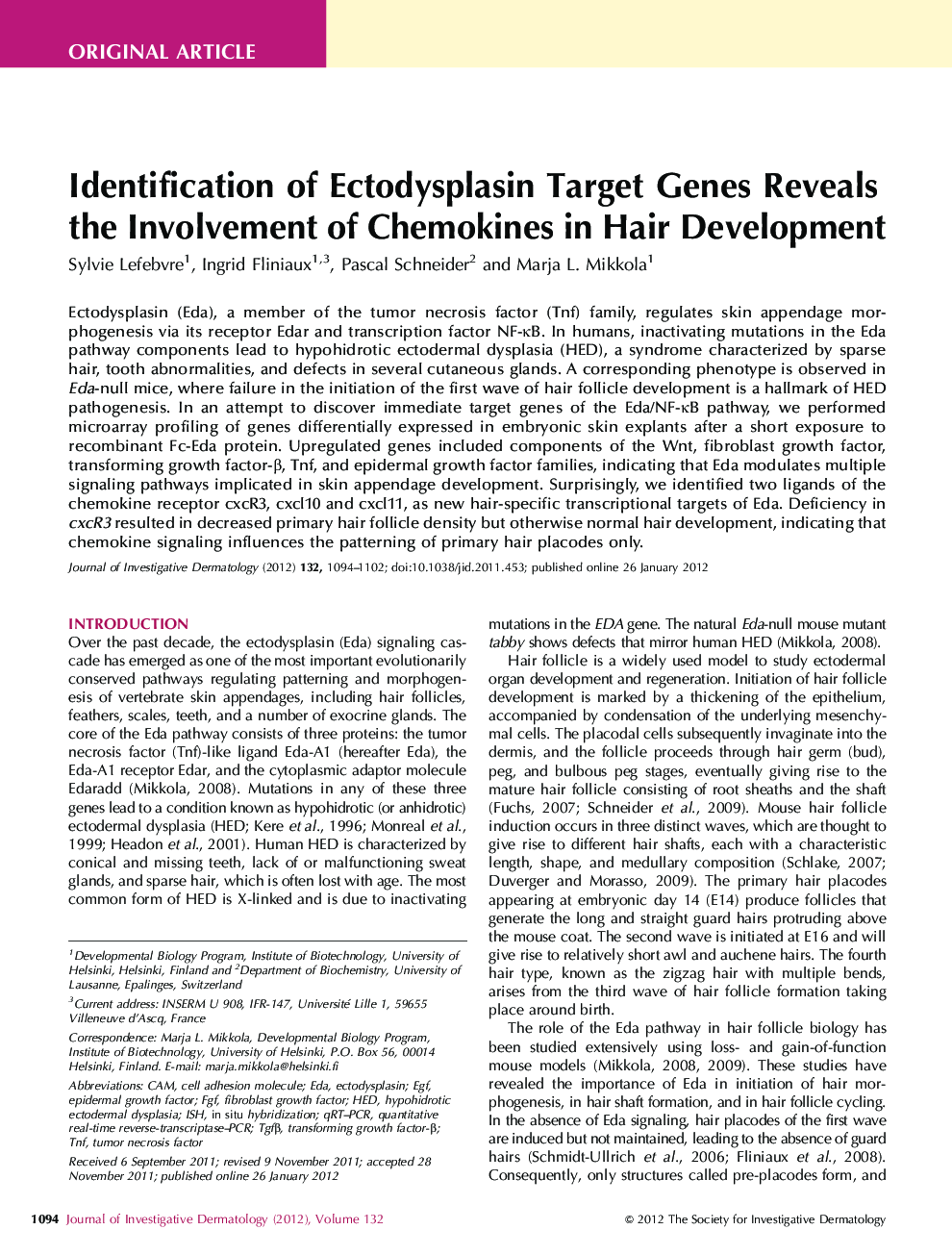| کد مقاله | کد نشریه | سال انتشار | مقاله انگلیسی | نسخه تمام متن |
|---|---|---|---|---|
| 6078105 | 1203559 | 2012 | 9 صفحه PDF | دانلود رایگان |
عنوان انگلیسی مقاله ISI
Identification of Ectodysplasin Target Genes Reveals the Involvement of Chemokines in Hair Development
دانلود مقاله + سفارش ترجمه
دانلود مقاله ISI انگلیسی
رایگان برای ایرانیان
موضوعات مرتبط
علوم پزشکی و سلامت
پزشکی و دندانپزشکی
امراض پوستی
پیش نمایش صفحه اول مقاله

چکیده انگلیسی
Ectodysplasin (Eda), a member of the tumor necrosis factor (Tnf) family, regulates skin appendage morphogenesis via its receptor Edar and transcription factor NF-κB. In humans, inactivating mutations in the Eda pathway components lead to hypohidrotic ectodermal dysplasia (HED), a syndrome characterized by sparse hair, tooth abnormalities, and defects in several cutaneous glands. A corresponding phenotype is observed in Eda-null mice, where failure in the initiation of the first wave of hair follicle development is a hallmark of HED pathogenesis. In an attempt to discover immediate target genes of the Eda/NF-κB pathway, we performed microarray profiling of genes differentially expressed in embryonic skin explants after a short exposure to recombinant Fc-Eda protein. Upregulated genes included components of the Wnt, fibroblast growth factor, transforming growth factor-β, Tnf, and epidermal growth factor families, indicating that Eda modulates multiple signaling pathways implicated in skin appendage development. Surprisingly, we identified two ligands of the chemokine receptor cxcR3, cxcl10 and cxcl11, as new hair-specific transcriptional targets of Eda. Deficiency in cxcR3 resulted in decreased primary hair follicle density but otherwise normal hair development, indicating that chemokine signaling influences the patterning of primary hair placodes only.
ناشر
Database: Elsevier - ScienceDirect (ساینس دایرکت)
Journal: Journal of Investigative Dermatology - Volume 132, Issue 4, April 2012, Pages 1094-1102
Journal: Journal of Investigative Dermatology - Volume 132, Issue 4, April 2012, Pages 1094-1102
نویسندگان
Sylvie Lefebvre, Ingrid Fliniaux, Pascal Schneider, Marja L. Mikkola,